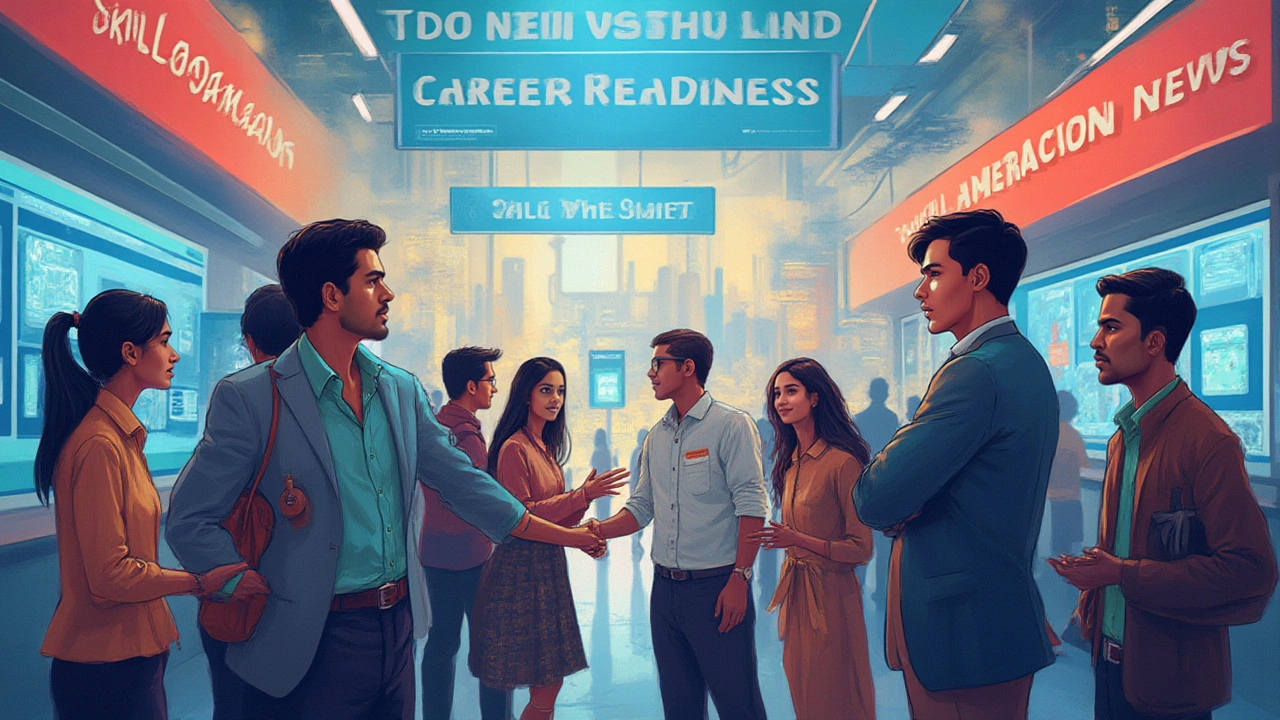Picture this: not everyone wants to spend years in a lecture hall, memorizing theories that feel worlds away from real life. Some people crave the whir of a saw, the spark of an engine, or the satisfaction from wiring a circuit that just works. For a long time, these career dreams were funneled into something called "vocational education"—but if you’ve searched for that old-school term lately, you might have noticed it’s vanished from course catalogs and government pamphlets. So, what do we call this type of training now? Turns out, the name change is more than a rebrand. It’s a whole new attitude toward skilled careers.
From Vocational Education to Career and Technical Education: Why the Name Changed
Vocational education, as a label, has faded out for a reason. The term comes with a mountain of baggage: images of dimly-lit workshops, tracking programs for the kids who “just weren’t academic,” and a sense that trade skills were somehow second tier. Schools and governments started phasing it out, especially in Canada, the U.S., the UK, Australia, and much of Europe, calling it Career and Technical Education—or CTE for short.
This wasn’t just a cosmetic fix. Experts noticed that calling something “vocational” felt outdated and didn’t sit right with how jobs have changed. Career and Technical Education focuses not only on traditional trades, but also on healthcare, IT, business, and emerging tech. We’re talking robotics, cybersecurity, 3D design—fields where the hands-on is just as high-tech as boardroom jobs. The new language opened doors for modern industries, attracting more diverse learners and breaking old stigmas. Even in Ontario, high school students can now take Specialist High Skills Major (SHSM) programs—a direct descendant of vocational classes, but with a cutting-edge feel.
One fascinating detail? In 2022, Canada’s federal and provincial governments invested $2.6 billion in CTE projects to retrofit old shops and grow new programs in green tech, elder care, and smart manufacturing. The shift in language also affects funding: public support often comes easier when a program is framed as “career and technical,” not just “vocational.”
What’s Actually Different in Modern Vocational—or CTE—Programs?
So, has anything actually changed beyond the name? Absolutely. The heart of these programs is still hands-on, practical learning, but the environment looks a lot more like 2025. Let’s put it this way: today’s students might build electric vehicle batteries or custom apps before lunch instead of just changing spark plugs.
Programs now run in high schools, community colleges, and private training centers. Some are tightly linked to unions or big employers, all aiming to offer a range of pathways: full-time diplomas, dual credits, apprenticeships, certificate courses, co-ops, or even stackable microcredentials you can collect as you work. The goal? Train for a job, move up the ladder, and retrain easily when industries shift.
Employers see a win here, too. Research from 2024 showed that 74% of Canadian CTE graduates landed full-time work within six months—much faster than many university grads. Fields like construction management, practical nursing, and web development are some of the fastest-growing, with Canada’s “Red Seal” designation for trades quickly becoming a badge of honor.
Inside the classroom, things have upgraded, too. There’s far more digital simulation alongside the soldering irons and welders. Toronto’s George Brown College, for example, built a virtual hospital for nursing students, so they hone their skills safely before ever meeting a patient. Many CTE courses even embed soft skills—teamwork, public speaking, leadership—which employers say are just as critical as technical know-how.

What Alternative Names Are Used Around the World?
We talk about Career and Technical Education here in Canada, but globally, the terminology is a maze. If you’re searching for what to call these programs, look for names like: Technical and Vocational Education and Training (TVET) in Europe, Australia, and parts of Asia; Professional and Technical Education in Latin America; and Trade Schools or Polytechnics in the UK and beyond. In Quebec, vocational education is called “formation professionnelle.”
This naming game isn’t just wordplay. It reflects how each country frames the value of hands-on skills. In Finland, for example, TVET includes several “learning pathways” that let students switch between jobs and further education smoothly—a design linked directly to the country’s low youth unemployment stats. In Germany, the famous “dual system” mixes part-time classroom learning and on-the-job training, with over half the country’s young people starting in TVET. Meanwhile, in the U.S., the Perkins Act of 2006 officially swapped out “vocational” for CTE, boosting both funding and program prestige.
Some big employers and non-profits have also taken up their own lingo. Google’s Career Certificates, for instance, sidestep the term altogether. They call what they offer "job-ready" courses—essentially CTE for the modern world. The takeaway? If you’re scouting for programs, don’t let old language throw you off the scent. Dig into course content and employer links, not just what the program is called.
Why This Language Shift Matters for Students and Job Seekers
If you’re job hunting or planning your education, knowing this naming trend is pretty crucial. University isn’t the only route to a well-paid and satisfying career—and today’s employers don’t bat an eye at CTE credentials. In fact, a 2023 survey by the Toronto Board of Trade found that more than 60% of local employers now value technical certifications just as much as a bachelor’s degree for entry-level roles, especially in technology, healthcare, and the skilled trades.
The stigma around vocational programs is fading fast. Modern programs are tied to real industry demand—think wind turbine tech or UX design. They also tend to have strong job placement support, and yes, practical work terms that drop you right in the deep end. The new names help nudge parents, students, and guidance counsellors away from old prejudices. Media coverage is catching up, too—with stories of “new collar” workers earning six-figure salaries without university debt, especially in AI-driven manufacturing or digital health.
Plus, the flexibility is hard to beat. Many CTE programs run part-time, evenings, or fully online—making them a lifeline for adults switching careers, parents juggling family, or newcomers to Canada who need fast, recognized training.

Tips for Finding the Right Modern Vocational (CTE) Program
So, if you’re browsing for hands-on training, here are tried-and-true tips for cutting through the jargon and finding what you actually want:
- Search for "Career and Technical Education," "Technical Programs," or "Specialist High Skills Major (SHSM)" if you’re in Ontario, instead of “vocational education.”
- Check for industry partnerships: Programs formally linked with unions, major employers, or organizations like Skills Ontario tend to have better job pipelines.
- Look for Red Seal endorsements, particularly if you want to work across provinces in Canada.
- Don’t ignore global programs—TVET, Polytechnics, or Professional Technical programs abroad may offer unique opportunities and hands-on internships.
- Scan for microcredential options or stackable certificates—perfect for upskilling over time.
- Ask about post-grad support. Many top programs have “work-integrated learning” officers who connect you directly with employers.
- If possible, visit campuses or virtual open houses. The vibe will tell you a lot about whether the program is innovative or stuck in the past.
And the most important tip? Remember that no matter the name, great CTE programs align with current employer needs, invest in real equipment or tech, and offer pathways to advancement—not just a first job.
Sure, the label “vocational education” is mostly history—but what’s grown up in its place is wider, cooler, and a much smarter bet for futureproof careers. Don’t let an old word limit how you see your next move. Whether you’re dreaming of building things with your hands or shaping the next AI breakthrough, there’s a program—not far from here in Toronto, or anywhere in the world—that’ll get you there. Just know which keywords to search, and don’t be afraid to ask for the hands-on route.
